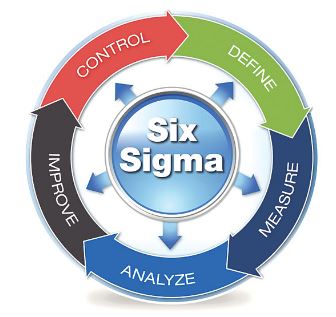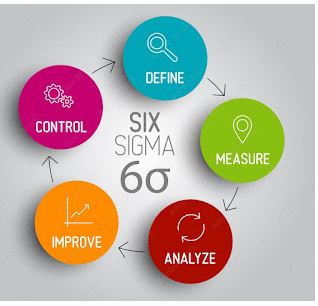
Six Sigma Certification Cost | Know all details about it
Last updated on 28th Jan 2023, Artciles, Blog
- In this article you will get
- Introduction
- What is Six Sigma?
- Six Sigma certification costs
- Who should participate in Six Sigma Certification Training?
- How importance is Six Sigma certification?
Introduction
A six sigma certification prepares the practitioner to detect flaws and improve business processes. Profits from six sigma are beneficial to a project management, team leader, or individual contributor. The phrase “Six Sigma” derives from insights discovered during quality control.Six sigma was invented by Motorola and was registered as a trademark in 1993. It refers to a company’s (initially manufacturing) ability to create enormous amounts of goods. Motorola identified a $17 billion savings after implementing six standards in 2005.
What is Six Sigma?
Six Sigma is a methodology and collection of tools for increasing organisational efficiency. Data analytics and statistics are used to speed up production and lower quality control costs. There are several advantages to this strategy, including the enhancement of productivity and performance among employees, the acceleration of business expansion, and the maximisation of earnings. Using a statistical technique that is data-driven aids in the reduction of production mistakes, which in turn aids in the prevention of product defects.
In 1986, an American firm named Motorola established a technique for quality management to accommodate the needs of its manufacturing and the rapidly expanding global markets. Given its usefulness, the method has been refined and renamed “Six Sigma” to assist businesses manage their operations and their goods.

Six Sigma certification costs
Professionals must pay the fee for each belt they choose to attempt in order to become Six Sigma certified. The price of being certified in lean six sigma is broken out below.
Six Sigma White belt certification cost:
The White Belt is the first level of Six Sigma certification and covers essential principles. White Belts may assist with quality and change management-related projects and problem-solving assignments.There are no certification fees associated with this. Individuals may get their White Belt certification at no cost from CSSC. ASQ and IASSC do not provide a formal certification for White Belts.
Six Sigma Yellow belt certification cost:
To attain Yellow Belt status, professionals must be conversant with Six Sigma’s essential principles. They understand where and how to apply these notions. Yellow Belt is suggested by ASQ for entry-level personnel who have a great interest in data gathering and analysis or process efficiency management.
Six Sigma Green belt certification cost:
Once a candidate obtains the Six Sigma Green Belt Certification, they are able to provide logical solutions that improve comprehensive quality management. Professionals with a Green Belt may help Black Belts with data gathering and analysis. They are able to readily identify the area of concern where difficulties exist, and may then formulate a strategy that will deliver solutions inside the organisation. If professionals seek these certifications, they may get a competitive edge by learning the process improvement methodology’s fundamentals.
Before obtaining Green Belt certification, ASQ needs three years of industry experience in one or more Six Sigma Green Belt domains.ASQ’s Six Sigma Green Belt certification costs $438 for non-members, $338 for members, and $238 for retakes. The cost of certification with IASSC is $295.In contrast to the ASQ and IASSC, the CSSC provides certification in two distinct methods. First, the essential Six Sigma Green Belt certification. Second, the level 2 Green Belt Credential for experts who want to further develop their skill sets at this level.
CSSC charges $159 for Six Sigma Green Belt Certification. The Level 2 Six Sigma Green Belt Certification is an additional certification that may be earned when a specialist submits a final assignment or job for examination or evaluation. The advanced certification is available for $300.
Six Sigma black belt certification cost:
Black belts are experts and innovation champions. They may manage Yellow and Green Belt holders who are participating in the project and head different project teams. They will be accountable for managing the full process lifecycle with a high degree of responsibility. Once professionals or individuals reach this level, they may serve as the project team’s lead consultant and become a vital stakeholder in the firm.
To be Black Belt holders, the ASQ needs professionals to meet one of the following requirements:
- Professionals must have completed two projects with a signed verification attached.
- One project completed with three years of industry experience and a signed confirmation attached.
- Six Sigma Black Belt Certification costs $438 for ASQ members and $538 for non–members, according to the organisation’s website.
- The price for retakes is $338. ASQ has the most stringent standards for achieving Six Sigma Black Belt certification compared to other organisations.
- Members seeking ASQ’s Master Black Belt Certification must pay $545 for the portfolio review and $2,124 for the examination.
- Non-members will be charged $650 for the portfolio evaluation and $2,229 for the examination. Retakes with ASQ will incur a $2,074 surcharge.
Six Sigma Certified Professionals: Job opportunities and salaries
After paying the Six Sigma certification fees and obtaining Six Sigma certification, a professional will be eligible for a job as a:
- Specialist in continuous development.
- Industrial and Mechanical Engineer.
- Manager of information technology quality assurance engineer manager of operational excellence.
In domains like as Artificial Intelligence (AI) and the Internet of Things, there are also many career prospects for Six Sigma experts (IoT). Certified professionals may explore employment including the following:
- User Experience or User Interface (UI/UX) Programmer Product Manager.
- Data Scientist business analyst consultant in business intelligence risk manager.
- Six Sigma-trained professionals may expect to earn a competitive salary.
- Certified Six Sigma Black Belts make between $77,214 and $116,834 per year, placing them among the highest-paid professions worldwide.

Who should participate in Six Sigma Certification Training?
These are some of the professions for whom this training is seen particularly pertinent:
- Quality control specialists.
- Professionals in process improvement.
- Production supervisors.
- Controlling specialists.
- Frontline and factory managers.
- Management specialists include HR IT and Finance Engineers.
- Company analysts.
How importance is Six Sigma certification?
Six Sigma seeks to give quantitative data to support your performance or production initiatives. Consequently, you are more equipped to handle them.No one likes change, but if you select Six Sigma, you’ll discover that it has a positive effect on every part of your firm.
1.Make the correct choice:
The Six Sigma methodology is statistically based. In order to depend on judgement and intuition, you want accurate measurements and statistics of your process.
2.Enhance your team’s cooperation and communication:
Six Sigma is intended to be a company-wide project that encourages everyone to see difficulties as opportunities and the pursuit of truth as the primary objective.As a consequence, workers will be less hesitant to voice their concerns, and other teams and departments will be seen as performance partners rather than rivals.
3.Enhancing customer satisfaction and product quality:
As previously mentioned, Six Sigma is concerned with decreasing faults and variances in the customer experience, whether for something real like a package of cookies or something immaterial like web software.Once you begin monitoring and analysing your operations, you can make the required adjustments to enhance the customer experience.
4.Reduced cost:
Poor quality and inefficient procedures result in expenditures like as missed deadlines, lost client loyalty, design modifications, management changes, and engineering changes, etc.
5.Enhance time management and output:
With a more effective team structure, project planning, data collecting and analysis, and business strategy, your whole firm will be more efficient.
Are you looking training with Right Jobs?
Contact Us- AWS Cheat Sheet Tutorial
- AWS Career Guide
- Why and How to Pursue a Career in AWS?
- From Developer to AWS Cloud Specialist – The AWS Certification Learning Paths
- AWS Cloud Practitioner and Required Skills | Expert’s Top Picks
Related Articles
Popular Courses
- Hadoop Developer Training
11025 Learners - Apache Spark With Scala Training
12022 Learners - Apache Storm Training
11141 Learners
- What is Dimension Reduction? | Know the techniques
- Difference between Data Lake vs Data Warehouse: A Complete Guide For Beginners with Best Practices
- What is Dimension Reduction? | Know the techniques
- What does the Yield keyword do and How to use Yield in python ? [ OverView ]
- Agile Sprint Planning | Everything You Need to Know
